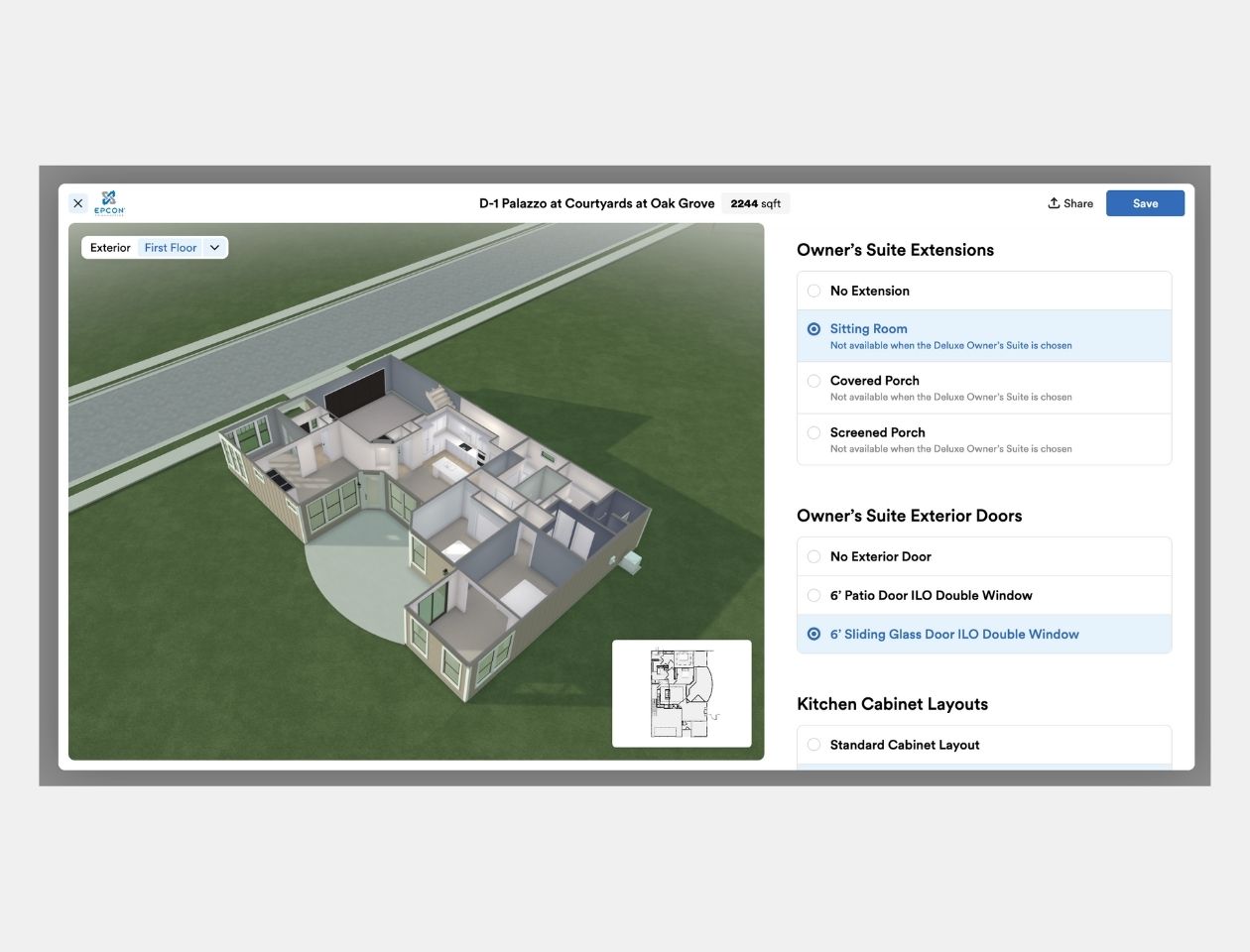“That's what drives me — to take experience creating automated solutions for commercial architecture firms and apply it to the production home building industry.”
Our incredible team makes Higharc a special place to work, helping create the best technology for today's homebuilders. Meet Senior Software Engineer Nathan Lowe, a LEED-accredited and licensed architect turned software engineer. Learn about Nathan's story and why he joined Higharc below.
Tell us about your career.
I received a master's in architecture from the University of Washington after getting an undergraduate degree in German Area Studies. I spent a few years straight out of school as a junior designer on the 260,000 square foot Husky Union Building for the University of Washington, using AutoCAD as the drafting and documentation tool. Drafting in a traditional CAD software is an exacting and time-consuming endeavor. I learned under the direction of mentors that there's an art form to keep the process sane.

Over my career, I transitioned from hand-drafting to AutoCAD to Revit (and other Building Information Model systems) and eventually to writing design tools in code. During my first junior designer foray in AutoCAD, I experienced the freedom of flexibility in a very manual drafting environment – you can develop a higher level of artistry and personal style because you're not so constrained by the opinions of the developers of an automated system. The downside of flexibility is repetitive tasks and the drudgery of change management, when you have to go back and manually redraw an updated condition everywhere it exists in a drawing set.
Now that I am part of engineering a home design system for designers and drafters, I experience a bit of weight knowing the system can either enrich the professional experience of those who design and draft homes, or, if done wrong, it can make them feel like uninspired cogs in an automated design machine. My hope and passion as a software engineer is to contribute towards a design system flexible enough to uphold a designer’s dignity as an artisan because I believe it is only through the hands of impassioned and engaged professionals that we all get the homes and neighborhood designs we want. The ideal system has flexibility in the proper dimensions and is intelligently designed to tackle drudgery and leave true problems of design thinking open for solving.

When I was entering college, I wanted to study computer science, but I wasn't confident enough to go apply. I was under the impression that is where the brilliant people who are really good at math go. I am a musician. I was interested in spoken languages. I studied German and felt way more confident in the domain of literature and art. It was a discovery for me that I would really enjoy writing software and see it as an extension of my other creative interests. Early on in my career, I realized much of design work could be automated or at least made more efficient by creating systems to augment design. At first, I was implementing architecture as any other architectural designer would, but I kept being drawn to projects where I could build the interface and feedback system for design. I also happened to be at Perkins+Will, a design firm known for its investment in research and development. I dove into environmental simulation and daylighting analysis because it was an area ripe for automation and was mandated for the large commercial projects seeking LEED accreditation. Eventually, I transitioned to a full-time job at Perkins+Will as an R+D engineer and built tools and interfaces for augmenting design.

The transition from architecture to engineering was set in stone when, in my free time, I wrote a widely used toolset in Rhino/Grasshopper called Meerkat GIS. It leveraged GIS data, which is how cities store parcels, topography, and other citywide geographic data, and enabled importing into 3D modeling software. Before Meerkat, there was a PDF circulating online that described how to arduously manipulate geometric GIS data to get it into modeling software. Meerkat enabled this same process with a straightforward interface inside the modeling software. With a few clicks, a designer could have the neighborhood context and make better design decisions based on where a project would sit in the real world. If you search for publicly available GIS data for many large cities around the world and they include geometry in a format your 3D modeling program accepts, there is a chance Meerkat was used to export that geometry. You can go to the Official Website of the City of New York and find neighborhood context geometry for public use that was generated with Meerkat. Back when I tracked usage, it was used in over 50 countries worldwide. The widespread usefulness of Meerkat helped build confidence in my ability to see a need and engineer a pragmatic and direct solution that fit in the designer's toolset and processes. I spent years designing buildings prior to becoming a software engineer, so I come to the table with an eye towards solutions that follow the grain of design thought – thought that is often less linear, more cyclical, multi-dimensional and much more like an artist’s process.
What's the most important thing Higharc provides for homebuilders, from your perspective?
It's difficult to create a home design with all of the required spaces and satisfied municipal stakeholders, see it properly in three dimensions, and then make assumptions about whether a home buyer is going to like that outcome. You could be constructing hundreds or thousands of copies of a home out in the real world. What if you discover a design flaw after the first few homes? Can you correct that flaw in a responsive and scalable manner? Or are you forced to take each disparate representation of the house in your various business operation systems and take the costly hit to update them piecemeal? If you're engineering a manufactured product like the iPhone, you can build and test a multitude of actual phones prior to ever delivering one to a customer. Homes are too large for this sort of interaction, so a responsive digital twin integrated into your business systems is paramount for being responsive to the market. Higharc provides this responsive 3D representation along with an integrated authoring environment that can propagate changes through the rest of the business holistically.
Give me an example of a problem you’re proud to have solved.
I’m proud to have built the foundation of the electrical design system for Higharc. Part of why I enjoyed working on it was because I was tasked to study prior art and come up with a broad strategy based on synthesis of manually drafted electrical plans. Higharc leverages portable electrical rules that can be applied to any home in the system. Prior to Higharc, builders had electrical rules of thumb written in spreadsheets, at best, and someone had to go acquire and read those rules to properly draft a home’s electrical plan. If those rules changed, some poor soul had to go to every home in the catalog and update the electrical. In Higharc, the electrical is declared as rule in the system and can be managed in a centralized fashion. Changes can be propagated to all of a builder’s homes immediately, when and if that is desired. It’s important to stress that configuring change propagation intelligently is the core of Higharc’s value proposition.

What is your personal mission?
I am a software engineer at Higharc because I get to create life-enriching technology in the domain of the built environment. In simpler words, I get to build software that is part of delivering homes and neighborhoods for real people to live in. It is still possible to design beautiful one-off custom homes in traditional two-dimensional CAD software, but it would be a missed opportunity to withhold from influencing the majority of homes – cost-effective production homes – with the same sort of eye for detail, uniqueness, and quality. I am helping to build a design system that is bringing informed and thoughtful design to the average home buyer. In addition to design-related benefits, Higharc enables builders to respond nimbly to external circumstances, whether environmental, contextual or market-related by embedding institutional knowledge in the componentry of design rather than just exposing it in the final delivered product. Through this work, I hope to help reclaim the placemaking aspect of production homes – providing a memorable, unique, and well-designed backdrop for the lives of those who will inhabit them. I hope to empower builders to deliver this vision for their customers and be relieved from the drudgery of maintaining siloed systems, which slows the pace of design and prevents delivering homes tuned to the needs of their buyers and contexts in which they exist.

Watch the abridged version of Nathan's interview below, and check out the rest of our employee interviews at Higharc’s YouTube channel.
See higharc in action
Discover how Higharc can empower your team to conquer change, modernize your buyer experience, and decrease cycle times.
Book a demo


.png)




.png)



.jpg)








%20(1260%20x%20960%20px).jpg)
%20(1260%20x%20960%20px).jpg)

.jpg)

.jpg)


















